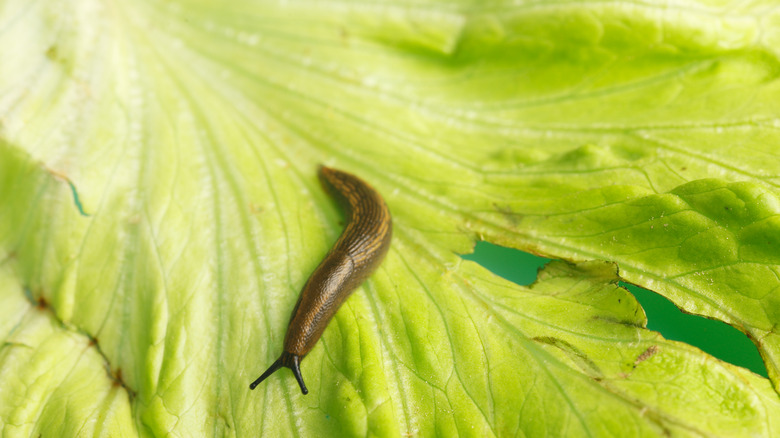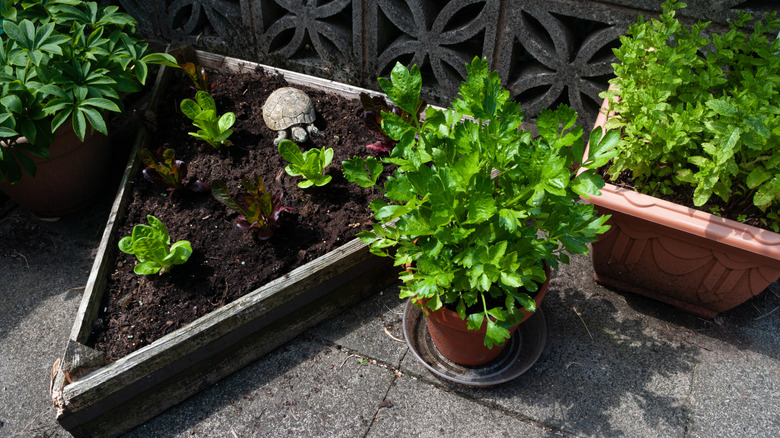The Companion Plant That Can Help Keep Slugs Away From Your Lettuce
Lettuce (Lactuca sativa) and mint (Mentha spp.) are downright neighborly when planted next to each other in the garden. In addition to favoring similar growing conditions, these plants are less attractive to pests when grown side by side. In particular, mint helps control slugs that love to chew holes in lettuce leaves at night. Slimy invaders find the plant's strong aroma so unpleasant that they tend to seek food elsewhere. This perennial herb's clean-smelling scent repels other pests, too, including flea beetles and cabbage loopers.
When sourcing mint plants to drive away slugs, choose a variety with a potent smell. Peppermint (Mentha x piperita) and spearmint (Mentha spicata) are two types whose scent packs a punch. Before installing mint in your garden, consider whether your other plants can tolerate its aggressive tendencies. If you're concerned that mint might take over the space, plant it in containers and place them near your lettuce plants. Growing multiple varieties of mint? Give each one its own pot.
For a second layer of slug deterrence, add pruned-off pieces of mint plants to the mulch surrounding your lettuce. You can also grow new mint specimens from small cuttings of mature plants' stems. Snip off a stem that's about 6 inches long, place it in a glass of water, and wait for roots to form. Once this has happened, move your new mint plant to your garden. Mint doesn't need much help to get established when grown in USDA hardiness zones 2 through 10. Plant it in a spot with full sun or partial shade, and don't forget to water it from time to time.
Another way that mint plants fight lettuce-loving slugs
As you prepare your garden for lettuce and mint, take a moment to correct any mistakes that might bring slugs to your yard. You might also wish to make your garden more attractive to songbirds, toads, and other creatures that eat slugs. Fortunately, mint can draw insects that are eager to join your fight against slugs.
Mint is a magnet for many pollinators as well as parasitoid wasps that feed on aphids and caterpillars. Some parasitoid wasps will feed on slugs as well. Plus, there's a fan of mint flowers that will gobble up as many slugs as it can find. This garden helper is the firefly. If slugs are scoping out your lettuce, firefly larvae are likely to eat them before they do much damage.
To get fireflies to devour lettuce-bound slugs in your garden, grow your mint in a way that's likely to entice them. In general, fireflies like tall plants that provide hiding places and flowers with lots of nectar, which mint flowers tend to have. In other words, let your mint plants reach for the sky and produce flowers if you want fireflies to spend time in your garden and eat slimy interlopers.

